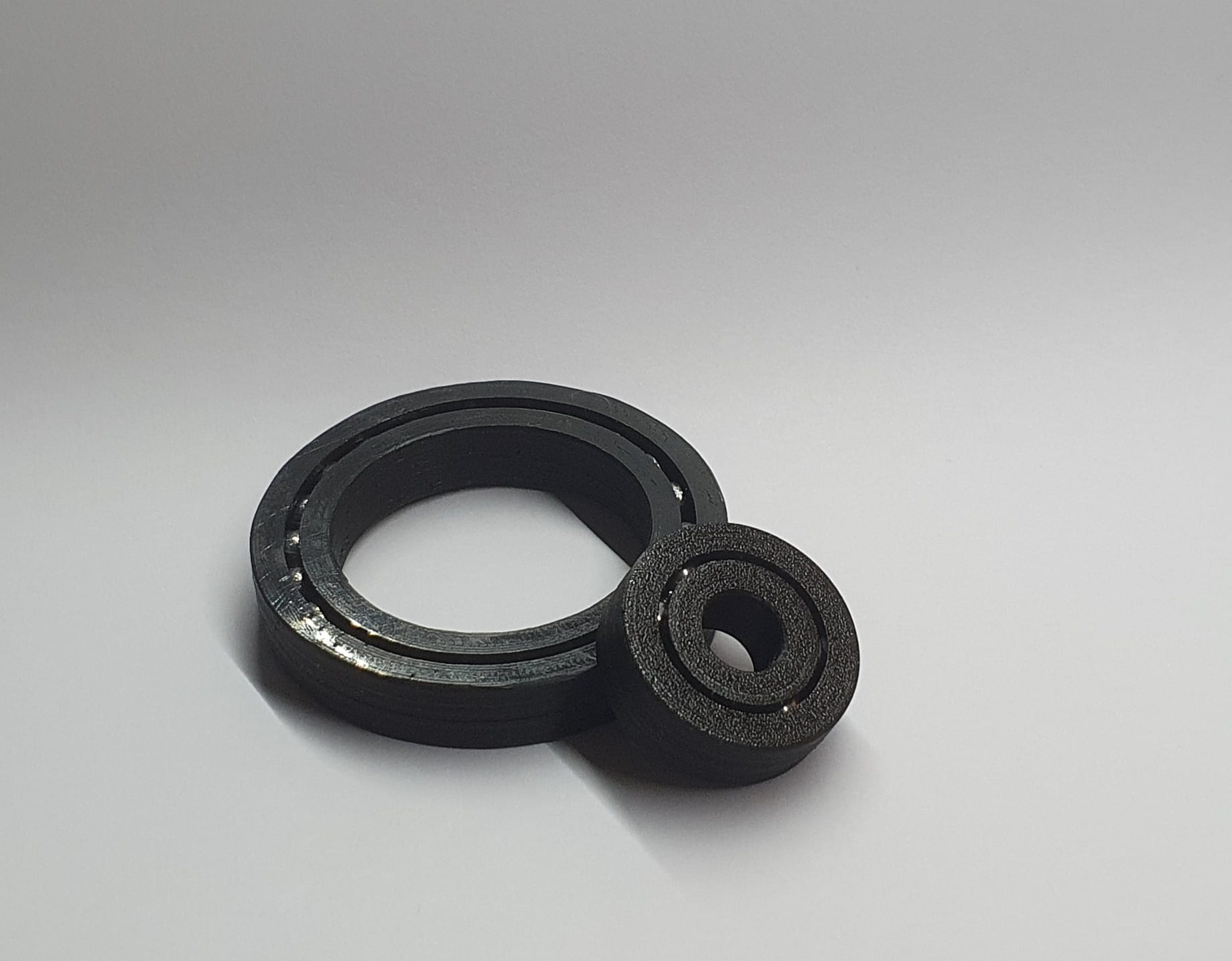
Fully parametric ball bearings
prusaprinters
<p>This design allows you to 3d print the casings that will make a ball bearing in combination with some bougth or even 3d printed balls.</p><p>My chose was some steel balls that i bought on aliexpress but you can use whatever you want as long as it is round, bb balls also work great and the example stl's i added are designed with those in mind. </p><p><strong>The process </strong>to produce a finished custom bearing is the following:</p><ol><li>You need to download and open the Fusion 360 file (Fully parametric ball bearing.f3d)</li><li>Measure the diameter of the balls of your choice</li><li>Go to Modify>Change parameters</li><li>Change the value of the parameters to the ones you want <a href="https://www.smbbearings.com/products/ball-bearings.html">HERE</a> you can check a list with the most used bearings and its parameters, a full explanation of each parameter is added below this instructions.</li><li>Go to File>Export </li><li>Expand the type of file list and select stl </li><li>Export the model make sure to check where you are saving the model to find it later </li><li>Slice the Stl file in your slicer of choice</li><li>Happy printing </li></ol><p> </p><p><strong>The assembly</strong> is pretty straightforward you place the inner shell inside the outer with the faces with an cutout in the same direction, then align the cutouts and push the balls through it. </p><p>You can add a bit of lube if you want it to run for a longer period but it will add a bit of resistance to the spin it wont be a problem unless you are looking to make a spinner or something similar in wich case i recommend not to use lube.</p><p>Dont worry the balls wont come out by themselves in order to dissasemble the bearing you will need to push the balls from the opposite side of the cutout with something like a flat screwdriver.</p><p><strong>Parameters: (mm)</strong></p><ul><li>Bore: Its the diameter of the hole. Depending on how finely tuned is your printer you might need to add a tolerance.</li><li>Outer_diam: Its the outer diameter of the outer shell. Again you might need a tolerance</li><li>Width: Its the width of the bearing aka the distance from one flat side to the other</li><li>Ball_diam: Its the diameter of the ball you have chosen eg. 6mm for a bb ball</li><li>Window: its the little opening between the two shells i found 1mm to be adequate but you can experiment.</li><li>Play: this one is kind of a compromise as you lower it you will have less play in the bearing but the friction will be higher as my experiments:(can change between printers)<ul><li>0.1 - No noticeable play but not smooth spin</li><li>0.15- A bit of play and a bit of resistance </li><li>0.2- Noticeable play but it spins freely</li></ul></li></ul><p><strong>Materials:</strong></p><p>I tried PETG and PLA both worked great.</p><p>With PLA you will have less wearing but you have to be carefull with running temperature.</p><p>With PETG you have more temperature resistance at the cost of durability.</p><p> </p><p>Feel free to ask anything in the coments as english is not may first language i might have not made some steps clear.</p><p>If you want please leave a review, a make would also be perfect.</p><p>Thank you</p><p> </p>
With this file you will be able to print Fully parametric ball bearings with your 3D printer. Click on the button and save the file on your computer to work, edit or customize your design. You can also find more 3D designs for printers on Fully parametric ball bearings.
